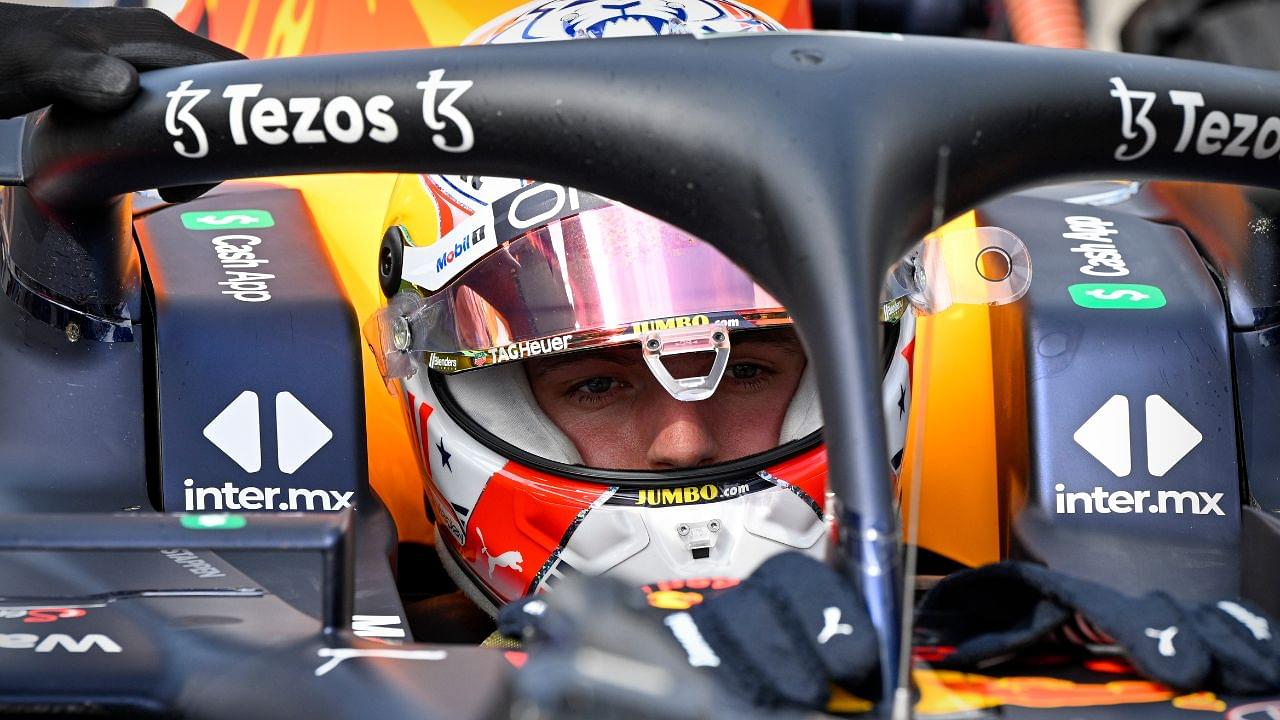A Helmet is probably the most important piece in an F1 driver’s uniform. F1 Helmets are extremely important in protecting a driver’s head during collisions and have life-saving implications in the sport.
An average F1 helmet is made out of Carbon Fibre and has layers of polystyrene on the inside. They are pretty light, with an average weight of 1.25 Kg depending upon modifications.
Earlier F1 helmets were made out of canvas and cork during the 50s and glass fibre in the late 60s and 70s. However, after the death of Ayrton Senna in 1994, FIA introduced a strict mandate to safeguard drivers’ lives.
The new camera angle they’re testing in FP1 is pretty spectacular. It’s INSIDE Leclercs helmet #F1 pic.twitter.com/ChgQmpoNVA
— Ruben Bos (@rubenbos) December 10, 2021
Modern F1 Helmets undergo stringent tests and are state-of-the-art in terms of protecting the driver. They undergo rigorous strength testing and are also fireproof.
Also Read: How Long Is F1 Pre-Season Testing?
How Ayrton Senna’s death brought improvements in FIA’s Helmet safety protocols
Ayrton Senna’s death was a tragic moment in the history of motorsports. The Brazilian three-time world champion died after a high-impact collision during the 1994 San Marino GP in Imola. This incident also brought a big change in the safety of F1 Helmets.
Senna’s autopsy revealed that he suffered cerebral death due to the collision. This brought attention to the helmet’s capacity to reduce the impact of the collision.
Since then, the FIA has mandated all F1 helmets to be tested for lateral forces. Additionally, the helmets were upgraded to be Fireproof and bulletproof in the coming years.
Many drivers’ lives have been saved since the introduction of the rules, including Felipe Massa, who survived after being hit by a flying spring whilst driving at over 250 KmH at the Hungarian GP. Massa sustained severe injuries, but the helmet protected his head from fatal forces.
Even Romain Grosjean can credit the helmet for saving his life after his Haas exploded following a collision with the barrier during the 2020 Bahrain GP. The fireproof helmet helped the Frenchman escape without any burns to his head.
Also Read: After Max Verstappen Speaks Up, F1 Boss Assures They’ll Gag No Driver
How Safe are Modern F1 Helmets?
FIA updated its protocols for testing modern F1 Helmets in 2019. The FIA 8860-2018 standards involve an array of tests to test helmets under various loads and need to pass them all to be accepted.
The Snell Memorial Foundation tests the modern F1 helmets. The testing organisation was established following the death of American racer William Snell in a crash in which his helmet was not sturdy enough to save him.
Some tests include dropping a 10 KG weight from a height of five meters. The helmets must be able to absorb the loads and must not show any dents on the insides.
Please spend 12 mins watching this @fia video on the new helmet safety standard for #F1 and all top championships. In the light of Massa’s incident, it reduces a potential 1000g impact to 50g !https://t.co/Yv0yZMJW9c pic.twitter.com/U1MRfNz6x7
— Craig Scarborough (@ScarbsTech) July 9, 2018
Helmets are also tested for various collision tests. The peak lateral deceleration should not exceed 275G. This protects the driver’s neck against the strain and aftershock of high-speed collisions, which frequently occur during races.
1.2g Bullets are fired on helmet visors at 500 km/h speeds. The visors must be 3.3 mm thick and should not protect against any damage to the helmet’s interior.
Even chin straps are tested by loading them with 38kg of weight. The straps are stretched to a maximum of 30mm when testing and must not come loose.
Helmets must withstand temperatures of 800°C to replicate the searing heat from explosions. However, the temperature should not exceed 70°C on the inside.
Also Read: F1 Boss Claims Formula 1 is Not For Sale Amidst Heavy Investments by Liberty Media







